Tags
"research"
Behavioral Neuroscience at the University of Washington: LB Miller, Winter Shadow 2016

One of the pictures I took of glowing antibodies in a brain slice
I can’t say that I ever imagined myself slicing up a brain before junior year of college. A few short weeks ago, I found myself doing just that: turning the huge crank on a deli-slicer-like machine to create a fifty-micron slice of rat brain. I then used an extra fine paintbrush to fish the brain slice out of the negative 22oC resting place and into a room temperature solution that would preserve it for future experiments.
I started high school thinking that psychology was the path for me. Somewhere between the first day of 9th grade and my first day at Reed, I reimagined myself as a rebel who would never follow in their parent’s footsteps. As a freshman I wandered around the philosophy department, and stuck my head in the political science department and finally, with much chagrin, signed up to take intro psychology my sophomore year.
Because I came home to psychology relatively late in my college career, I had to find my way through the department quickly. I had only three years to complete my major requirements, while those who knew what they were about from early freshman year had four. When I found myself enchanted with behavioral neuroscience, I found that I did not have room in my schedule to pursue this interest as well as graduate on time. This is when the winter shadow program appeared in my life and gave me a wonderful opportunity to explore the field of behavioral neuroscience in a hands-on way.
Continue reading Behavioral Neuroscience at the University of Washington: LB Miller, Winter Shadow 2016
Kartini Clinic for Pediatric Eating Disorders: Mitra Shokat, Winter Shadow 2016
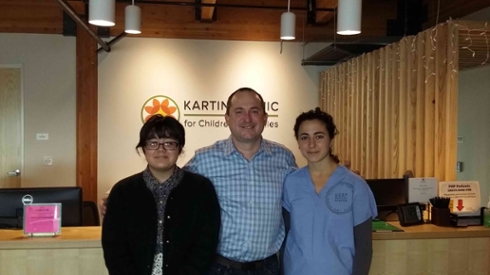
Kartini Clinic is a small health clinic in Northeast Portland that offers treatment for pediatric patients with eating disorders. Kartini’s approach to eating disorder treatment differs in many ways from that of other facilities. The clinic’s treatment program is family-based and places an emphasis on eating disorders as genetic metabolic disorders instead of psychiatric disorders. In the past year, Kartini Clinic has even implemented individualized genetic testing as a part of their treatment process.
Upon intake, Kartini Clinic patients, ranging in age from 6 to 23 years old, are placed in one of the clinic’s three stages of treatment: the partial hospitalization program, the intensive outpatient program, or the outpatient program. During my two weeks shadowing one of the clinic’s medical assistants, I was given the chance to observe all three levels of treatment. However, I primarily interacted with patients in the partial hospitalization program, taking vitals each morning and occasionally eating meals with them. I learned some incredibly useful skills over the course of those two weeks, including how to take blood pressure manually, how to analyze urine samples, and how to recognize abnormal levels in certain vital measurements.
During my time at Kartini Clinic, I also conducted research. I was responsible for collecting data on the initial diagnoses and intake medications of one hundred of the clinic’s most severe patients. This data will later be compared to the results of genetic testing for those patients. This genetic testing, conducted by a company called Genomind, gives the doctors at Kartini Clinic information about specific mutations that are commonly associated with negative reactions to certain psychoactive drugs. This type of information is invaluable to the doctors, as they often prescribe psychoactive drugs to combat the anxiety and depression that often accompany eating disorders. The goal of our research is to observe any correlations between the results from this genetic testing and the severity of the patient.
Multiple Sclerosis Neurological Practice and Research: Johhny Mendoza, Winter Shadow 2016
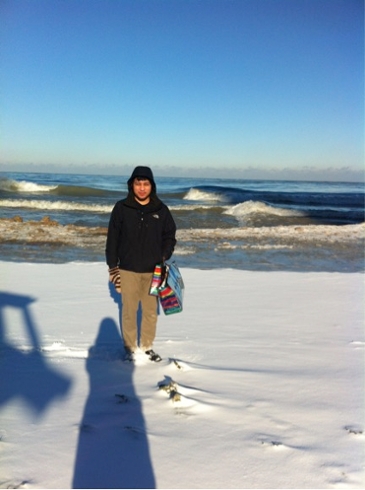
Walking down the shore of Lake Michigan right before I slipped on ice. Photo Credit: Shannon Bacheller, ‘16
I’m not one to travel. NYC had been my home for 18 years before I got accepted to Reed. Stasis breeds complacency and so I left my home. Moving to Portland would stir in me the sort of anxious energy that can be channeled productively. Even so, I wasn’t comfortable calling the place home until my last semester. I arrived with the dream of becoming a doctor. Having completed a synthetic chemistry thesis, I left more confused now than before as to what my true love was, be it medicine or chemistry. Being so infatuated with two things is a strange thing indeed.
Though I welcomed the short break, I was eager to ease my cognitive dissonance. My next destination was Chicago, IL, where I was to shadow Dr. Daniel Wynn (’77, Biology) at his private neurology practice in the suburbs. I left NYC once more in the hopes that a wiser soul than I, a clinical researcher and neurologist at a successful multiple sclerosis center, could aid my plight. Being in a foreign town would force me to explore.
Being a traveller grants one the comfort of knowing that, when overwhelmed by the novel, home is only a ways away. After my first visit at the clinic, it was obvious Dr. Wynn was a master of his craft. He charmed his patients, talked to them like they were old friends. His patients appreciated his wit (as did I), his genuine care, and above all, his patience; he treated his patients as equals. He took his time to explain all things in detail. He consulted with his patients on all matters and left all final decisions up to them. They worked as a team. They shared the ups and downs of their treatment, the good and bad stories, their wishes and worries.
Continue reading Multiple Sclerosis Neurological Practice and Research: Johhny Mendoza, Winter Shadow 2016
LBPA Bacteria Lab at ENS Cachan: Kerry Jones, Winter Shadow 2016
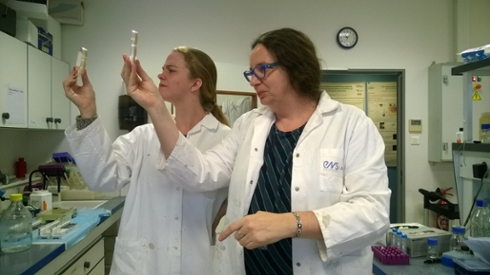
Imagine you’re me. You’re 20 years old and you love DNA, but have very little on your resume to show for it, save a former lab tech job and a prayer that your future employer can detect your enthusiasm. You’re dragging a conspicuously neon suitcase down the street of a Parisian suburb following the signs to École Normale Supérieure de Cachan, a private University with a reputation for its scientific prestige. Not surprisingly, your three days of 1990s-era in-car-insta-French CDs have done nothing to prepare you for the conversation with the security guard explaining what you’re doing there. For the next two weeks, you’ll be having these conversations with everyone you meet by courtesy of the immediate observation that you are out of your element. Your comfort zone is 6667 km away, and you are really excited not to be in it.
For my Winter Shadow Internship, I was working under the supervision of Bianca Sclavi, a biophysicist in charge of the Bacteria Lab at ENS Cachan. Suffice it to say that my Winter Shadow experience was a learning opportunity, but also an experience of exposure on many counts.
LBPA is an interdisciplinary lab, so projects not only pass through the hands of biologists, but chemists, mathematicians, and physicists as well. In addition, Bianca often seeks the assistance of collaborators around the world from Minneapolis to Cambridge to other side of Paris. Coming from Reed, where the Bio Department and the Physics Department ironically feel miles away from one other, this was one of the first surprises about LBPA: how scientific inquiry in its raw form refused to stay in one place. With this in mind, as well as Bianca’s tendency to work on multiple things at once, it was often easiest to follow the development of individual experiments.
Continue reading LBPA Bacteria Lab at ENS Cachan: Kerry Jones, Winter Shadow 2016
Wyle Labs, NASA Ames, Ali Cox, Winter Shadows 2016
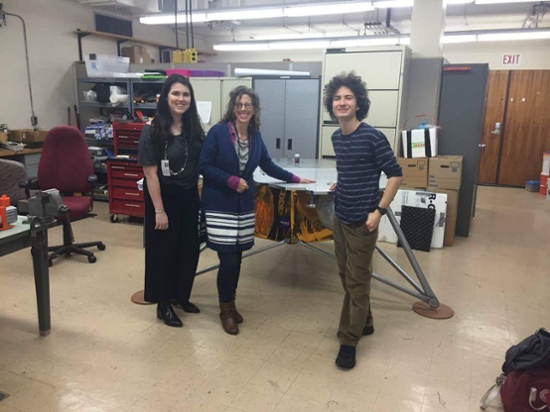
The first day at Nasa Ames Research Center, Arwen showed us her office, where she keeps samples of Mars and Moon dirt analogs (formulated on Earth to resemble as closely as possible the real thing). Apparently these samples are used to test rover instruments to try to determine as best as possible how they would interact with the foreign environment. Arwen also kept pictures of all the previous groups she has worked with on various projects. Among them were a collaboration with the Japanese space agency to build a giant, human-sized centrifuge to simulate the gravity on the moon and on mars, and the construction of the solar panels of the ISS. Arwen showed us a piece of these panels. They were made of an incredibly thin material with intricate circuitry. Apparently when folded the basketball court long panel becomes only 3 inches thick, which I thought was amazing.
After this inspiring first impression of Arwen's job, we attended a meeting on a space station bio-lab Arwen's team is working on. Though there was a lot of technical talk that I didn't understand, I felt the vibe of teamwork and enthusiasm.
Many of Arwen's colleagues work on side projects with a different group of people out of their own interests. One of Arwen's side projects is a new Mars lander whose main goal is to directly search for life using a big drill, unlike previous rovers, which were apparently more concerned with geology. We got to see the life-sized wooden model of this lander built by Dave, a spacecraft expert. Dave was also nice enough to give us a tour of an ancient Titan 1 rocket. He even gave hand-outs about rocket engine principles and the many different types of rocket engines!
Continue reading Wyle Labs, NASA Ames, Ali Cox, Winter Shadows 2016
North Seattle College, Haley Tilt, Winter Shadow 2016
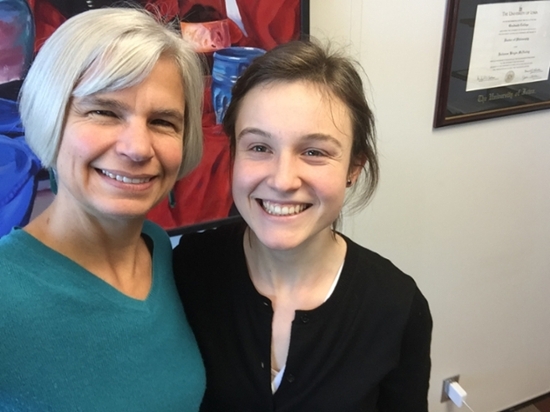
Julie and Haley at Julie's office.
Two days ago I arrived at Julie Kirgis’s home overlooking the Puget Sound. Julie is the Dean of Arts and Humanities up at North Seattle College, but she also has a strong background in sociology research. Since I hope to go into education administration or research (I don’t know which yet), hanging out with Julie for a few days seemed like an awesome opportunity.
That first evening, Julie and I made a quiche together in a pie pan whose generous depth resulted in a soupy final product. Tom, Julie’s husband (and a Reedie), recommended that we flip the quiche upside-down in a saucepan and drain off some fluid. Since that made the crust soggy, I suggested we put it back in the oven. After three hours the quiche looked like we’d run it through a centrifuge, so much had it separated into its component parts. 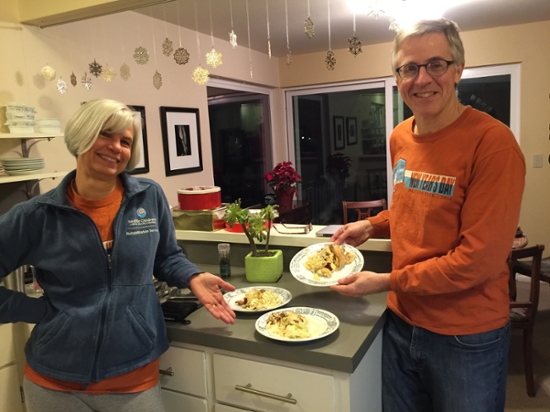
Coming away from it all, I want to emulate the way Julie goes above and beyond to inspire a sense of community among her faculty and a sense of trust between them and herself. Of all the administrators “on the dark side” (according to the faculty), Julie’s faculty really seem to believe that she has their best interests at heart—because she does, and she lets them know it. I got to see Julie lead large meetings, meet with all of the North Seattle deans in the “cone of silence,” and support her faculty one-on-one. On one occasion, a faculty member wanted to come in just to vent that she was planning to overload her own class by three students. She wanted to do it because she knows that these students really need the class, but for her this meant extra grading and no extra pay. Julie was the listening ear who acknowledged that no, that’s not fair. But at the same time, as an administrator, Julie balances the budget and makes sure that her division isn’t running classes they can’t afford (classes without enough butts in seats). That means she’s also responsible for cutting classes and trying to get classes as full as possible. She’s often responsible for making unpleasant decisions that mean fewer jobs for teachers and cancelled classes for students. The fact that her faculty still trusts her and comes to her with their frustrations is remarkable.
Continue reading North Seattle College, Haley Tilt, Winter Shadow 2016
Presidents Summer Fellowship, Nanofluids and Gene Mapping Part 2, Abrar Abidi

For his President's Summer Fellowship, Abrar Abidi ’16, physics major is working in a lab at McGill University in Canada, helping to develop new nanofluid technology to improve DNA mapping methods. Read on for his second blog installment:
On so many warm summer evenings here, red and white flares shoot up on the horizon, hissing as they go, before exploding with a deafening pop, forming a lavish spectacle in the Montreal sky. Often as I sit in my little Victorian-era apartment, sudden bangs and crackles send me rushing out to the roof of my building, so I can look toward the harbor, where on an otherwise forlorn stretch of land, six thousand rockets now fire heavenward in a single night. Yearly, the largest firework festival in the world—a kind of pyrotechnic Olympics—takes place in Montreal throughout the month of July. Groups from countries across the world, with their eyes set on prestigious awards, collect in this city to show off their talents in front of three million people. This year, England won the gold medal, while France took home silver and China, bronze. All this amid a procession of other festivities celebrating jazz and African cultures and circus arts and film and comedy. On the few nights not occupied by these events (and we’re still talking only of July), there are huge live music shows, free to the public, many taking place a two-minute walk from my front door.
The lab is a far quieter and colder place. With vents constantly blowing dry, chilly air on every floor of the building, I’ve taken to swaddling myself in at least three layers. Fortunately, the work I do expunges all my guilt for staying indoors. The opportunity to participate in this lab’s experimental efforts is what lured me to McGill in the first place, and in the previous month, my project has taken on a more experimental flavor. Sara, a good friend and researcher with whom I’ve been working closely since June, gave me the task of analyzing thousands of fluorescence microscopy images, zoomed in so close that a fraction of the width of a single human hair could easily eclipse the viewfinder. Fluorescence microscopy is a remarkable technique, where special dyes are used to stain the object of interest, causing it, when illuminated by a powerful lamp, to cast a vivid, luminous glow, no less dazzling to the eyes than the firework displays I can sometimes see from the lab window. Our microscopes are trained on minuscule nano-devices that Sara very cleverly designed and fabricated. Below the glass cover slip, and within these tiny devices, anywhere from a few dozen to several hundred strands of DNA can be seen drifting here and there, tossed about by Brownian motion, flashing like fireflies in the night. Then, with the flip of a switch, the strands rush toward the centers of a series of equidistant spaces, where they accumulate and extend, resembling a phalanx poised for battle. A dial that controls the frequency of a current sent through the device can manipulate their movement, alternately dispersing and concentrating the DNA. The potential applications for this invention are dizzyingly exciting: nothing less than the technology future generations might use to map entire genomes, at speeds and with accuracies far beyond anything currently possible.
Siegel Salmon Restoration Internship 2015: Garrett Linck, Part 2
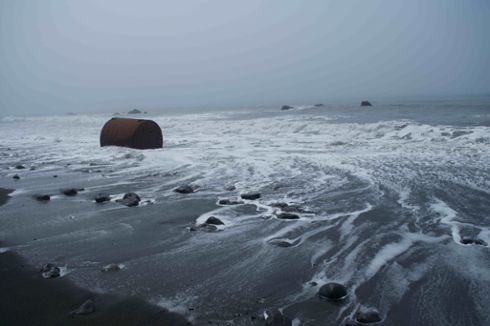
Garret Linck is working on habitat conservation and restoration in the California wilderness as the Paul Siegel Salmon Restoration intern.
It’s hard to believe that I only have two and a half weeks left working for the Mendocino Land Trust. I’m nearly finished with one of the largest projects I’ve been working on this summer: a management plan for the Noyo River Redwoods Property. In my last post I mentioned the salmonid habitat surveys I was conducting in the Noyo River with Doug. This property lies along that same river, but further inland in eastern Mendocino county—near the city of Willits. The 426-acre property was purchased for $7.5 million in 2011 by Save the Redwoods League (a non-profit organization that protects and restores coastal Redwood forests), before being sold to the Mendocino Land Trust in 2012.
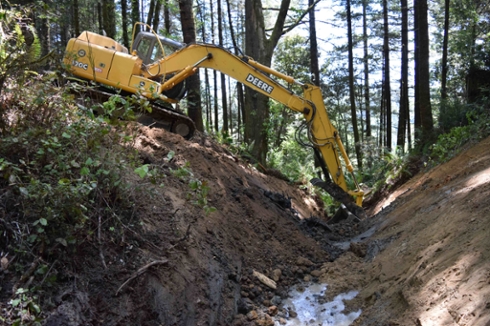
Continue reading Siegel Salmon Restoration Internship 2015: Garrett Linck, Part 2
Presidents Summer Fellowship, Nanofluids and Gene Mapping, Abrar Abidi
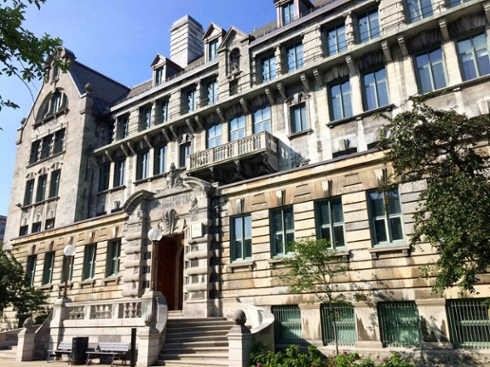
For his President's Summer Fellowship, Abrar Abidi ’16, physics major is working in a lab at McGill University in Canada, helping to develop new nanofluid technology to improve DNA mapping methods.
A chemist who had close friendships with both Albert Einstein and Ernest Rutherford was once asked to share his recollections of the two men. In response, he explained:
“[Einstein] always spoke to me of Rutherford in the highest terms, calling him a second Newton. As scientists the two men were contrasting types—Einstein all calculation, Rutherford all experiment… There was no doubt that as an experimenter Rutherford was a genius, one of the greatest. He worked by intuition and everything he touched turned to gold. He had a sixth sense.”
Sigenics, Reed Winter Externship Program, Debra Moda Raduma
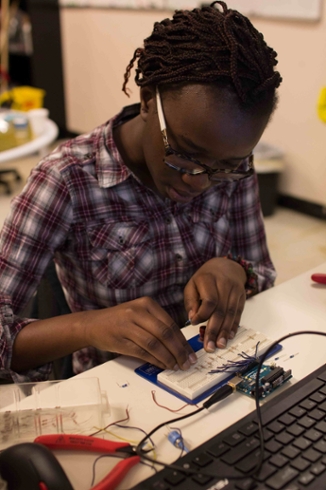
Debra Moda Raduma, sophomore math major, participated in a winter externship in Southern California working with Reed parent Dr. Douglas Kerns at Sigenics, a circuit design and production company
Over winter break, I was fortunate enough to get to visit Southern California where I spent a few days, enjoying the good weather and scenery. I fell in love with Orange County right from the moment I landed at John Wayne Airport. I was so scared and excited at the same time but I had two other externs, Edgar ’17 and Farhan ’18, to share in my worries, as none of us knew what to expect. We were going to work at Sigenics, a company that specializes in the designing of microchips. It has two branches, one in Chicago and another in Sierra Madre, where we were scheduled to work.
The first day in the lab we were greeted by the photo of the famous mathematical physicist James Clerk Maxwell, whose frame hung steadily on one of the walls of the lab. I was already impressed from the word “go”. I was able to learn and understand how analogue and digital systems intersect. We worked on semi-projects, where we used breadboards to build circuits, and an arduino (I didn’t know what this was either!
Continue reading Sigenics, Reed Winter Externship Program, Debra Moda Raduma
Economics in Cape Town: McGill Lawrence Internship Award, Sarah Brauner
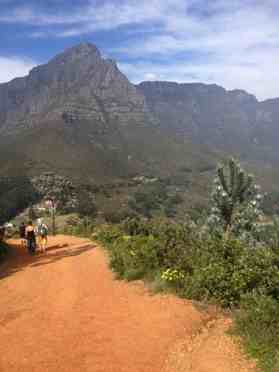
Sarah Brauner, junior economics/mathematics major, received a McGill Lawrence Internship award to spend her summer in Cape Town, South Africa working at the Economic Policy Research Institute.
This summer has been a story of disparate images and experiences, and as I sit down to write this post, its hard not to be daunted by the task of stringing them together into a cohesive narrative. In fact, the more I reflect, the more it seems that the thread holding all that I wish to convey together is a series of sharp contrasts that I have borne witness to, participated in, and attempted—with mixed success—to process.
The backdrop for all this—Cape Town, South Africa—is in some ways one of the most beautiful places I have ever been. Table Mountain, one of the Seven Wonders of the World, is visible from almost every vantage point in the metropolitan area, and beaches (apparently the setting for Shark Week) surround the city. Eucalyptus and palm trees, British-colonial architecture, striking panoramas and even Baboons, abound.
A Long Overdue Reflection, McGill Lawrence Internship Award, Sunny Yang
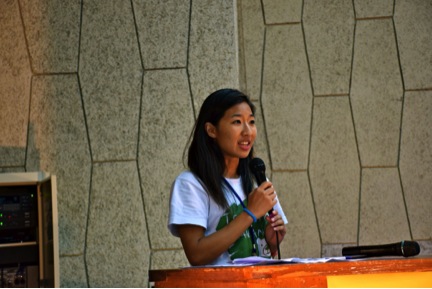
Me being the MC for the closing ceremony of the summer pre-service training.
The past two months have been a whirlwind of events, feelings, and encounters. Quite different from my original imagining of this summer internship, yet equally as fantastic, or even more so.
Originally, the plan was to spend half of my time doing a field research project in rural regions in Taiwan for the organization Teach for Taiwan, and the other half of the time would be spent assisting the organization in finding mentors for Teach for Taiwan's pilot cohort teachers. Well, plans don't always work out, especially independent internship projects like this.
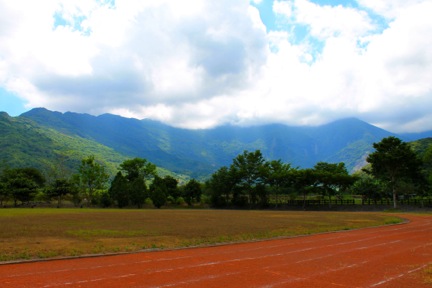
Off Quad Rule: Part 3
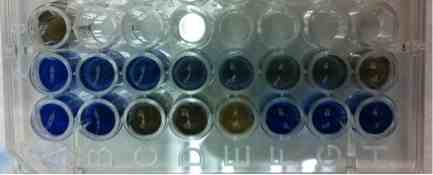
Suimono
This week started out great, with the Spurs winning on Sunday beating the Heat. Just when I thought my coworkers couldn’t be any happier or nicer, I am pleasantly surprised. The lab looks cleaner, the glassware is shining, and the hallways smell like victory in place of the familiar urine, iron, and formaldehyde-blended scents. This week I’ve been back and forth between two lab benches on opposite sides of the building, working on the preliminary data that measures the activity of cannabinoid receptors, specifically CB1 and CB2, in the collected lymphocytes.
Gyoza
Continue reading Off Quad Rule: Part 3
Harvesting Energy from Fluids: The Beginning of a PSF Summer
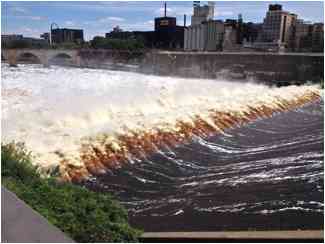
My experience studying wind energy at St. Anthony Falls Laboratory began in early June. In between the end of school and the start of the laboratory experience, I spent two weeks on a WWOOF farm in Gresham, Oregon. Here, I shoveled, weeded, and relocated a variety of farm supplies. This manual labor felt refreshing and productive after spending a year completing mental labor. The intimacy that I had with nature on the farm was very meaningful. The best part, however, was the interesting philosophy of the farm. Everyone shares work as well as resources, and no money is exchanged. The farmers also advocate working slowly in order to thoroughly live and learn. They even practice a five-hour workday as opposed to the standard eight hours. This was a fascinating demonstration of how to elude stress and promote cooperation and love. This farm was both idealistic and idyllic.
After the farm, I visited the beautiful Oregon desert, and then I flew to Minneapolis, Minnesota. I settled into my summer residence - a house inhabited by Macalester College students. I found this inexpensive room through a classmate at Reed, for there is a sizable large crossover between the Reed and the Macalester communities.
I then visited the laboratory – and it is amazing. It is located where the Mississippi River runs through downtown Minneapolis. While the urban skyline is beautiful, it pales in comparison to the natural scenery. The lab is located below a magnificent 50-foot waterfall and next to roaring rapids. This setting dramatically demonstrates the power of fluids. The lab was built below a waterfall so that gravity could be harnessed in bringing the water from above the falls to the experimental facilities below the falls. As a fluid mechanics laboratory, it uses a lot of water.
Continue reading Harvesting Energy from Fluids: The Beginning of a PSF Summer
Green Molecules and Green Chemistry Labs: Johnny Mendoza, PSF Summer Experience
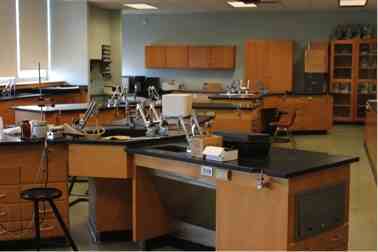
The last time I had been in this chemistry lab was 2 years ago. Back then, I was just getting my feet wet in the field of organic chemistry with the aid and guidance of my professor, Julia Robinson-Surry (’06). Now, I’m working with Julia and the lab teaching assistant, Cindy Liu, to dive deep into the field of green chemistry. With their help, I plan on revamping the current organic chemistry lab curriculum at Bard High School Early College Queens, my old high-school, in an attempt to make it more environmentally-friendly. In addition, I hope to learn about the role and synthesis of green catalysts in organic chemistry, specifically Julia’s work with Fe-TAMLs, a group of oxidation catalysts that has proven useful in environmental cleanup efforts.
Bard Queens is a small school. With 600 students on two floors, it didn’t always feel that way, but the average class size is 20 students. It is also a new school, at only 6 years of age. This comes with some inherent difficulties. For example, the chemistry lab at Bard is not as well endowed as Reed’s. For one thing, there are only two fume hoods, one of which is not working. The only way these chemistry students can characterize their product is through infrared spectroscopy (IR) or physical analysis (i.e. matter state, melting point, boiling point, chemical assays, etc.). In most organic chemistry labs, nuclear magnetic resonance spectroscopy (NMR) and gas chromatography–mass spectrometry (GC-MS) are standard analytical methods. Our project must keep these limitations in mind, and design labs that can be preformed mostly on the bench-tops, while avoiding volatile/strong-smelling chemicals and synthesizing products that can be differentiated readily from any reagents used.
Bard Queens also employs a relatively unique curriculum, where the first two years of school are dedicated to fulfilling high-school requirements and the last two years dedicated to taking college courses with the goal of graduating with an associate’s degree. The students taking organic chemistry here are generally 2 years younger than those at other colleges. The lab periods are also shorter (2 hours, 40 mins vs. 4 hours at Reed). One of our goals will be to make these labs accessible yet rigorous, worthwhile yet not time-consuming, and above all, interesting.
Off Quad Rule: Part 2

Tapas
The protein curve, calibration curve, and initial lymphocyte concentration results from last week came back and were excellent, or “acceptable” in research terms. A little more explanation (sans math, I won’t bore you): The protein curve is a plot that measures the concentration of protein loaded into a well of the plate vs. the optical density associated with it. This is determined by incubating the loaded well plates using a dye reagent, which will produce a distinct pigmentation for each protein concentration in the individual wells. Using colorimetry, protein concentration can be quantified by detecting differences in tint and give results based on a specific wavelength. The same goes for the calibration curve, however the purpose for this is to make sure the ELISA Assay kit works, and to make sure the person operating it knows how to properly use it. The initial lymphocyte concentration results are done to get an estimate of the typical concentration of lymphocytes in the blood samples, this is run in tandem – so to say – with the protein curve. This determines the lymphocyte concentrations relative to the known quantities, and depending on the dilution factors (10x and 100x in this case), also gives suggestions about whether or not to dilute samples. That was quite filling; I hope you’re still a little peckish after all that.
Paella y Sangria
Continue reading Off Quad Rule: Part 2
Reed Winter Externship Reflections 14: Number twenty-six, Thompson-Schill Lab, Phoebe Bauer
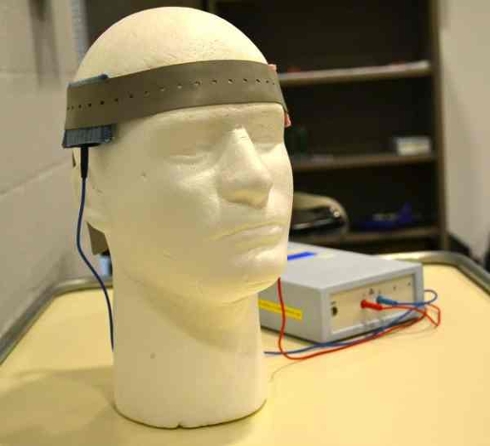
Despite having only a couple days to explore, this externship was productive and enjoyable. Sharon made sure to set up plenty of good things to make the best use of our time, so we bounced between people pretty quickly. We got to see a technique called transcranial direct current stimulation in action, with Ben as a participant. tDCS (see image) involves electrodes that pass a current intended to stimulate or impede neural firing through a certain section of a brain, therefore manipulating the behavioral outcome on an activity.
We also had the opportunity to talk individually with a number of Sharon’s graduate students and post-docs, hearing about their particular research projects in her lab as well as their career trajectories. This was incredibly useful, since we don't have access to people in those positions at Reed. Many of them encouraged us to take time off and see more of the world before entering grad school, because once on that path it will be a long time before we get another chance to do so. But having done their wandering they all seem quite happy to be where they are now, and I think their diversity of perspectives is one thing that makes her lab a good one.
Continue reading Reed Winter Externship Reflections 14: Number twenty-six, Thompson-Schill Lab, Phoebe Bauer
Reed Winter Externship Reflections 14: Number Eleven, Thompson-Schill Lab at University of Pennsylvania, Caitlyn Hoeflin
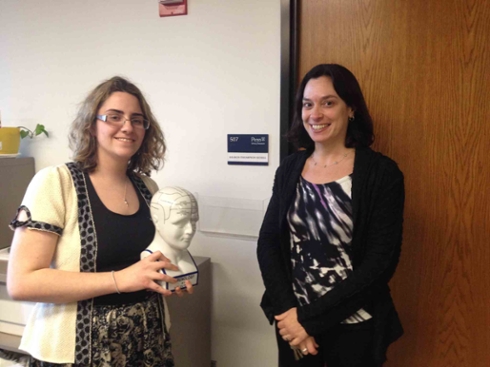
There aren’t too many externships where they strap electrodes to your head. Not on the first day, at least.
But here I was, at 11 AM on a Thursday, listening to a cheerful senior rattle off instructions while gently attaching two large rubber pads to my scalp. While this may sound eerily like the start of a ‘50s science fiction movie, I was actually just a participant in a tDCS experiment, a form of neurostimulation in which constant, low-level current is delivered to the brain via small electrodes. tDCS changes the resting potential of neurons, making it harder or easier for them to fire. As a result, it can be used to temporarily increase cognitive ability in areas like memory and language.
Continue reading Reed Winter Externship Reflections 14: Number Eleven, Thompson-Schill Lab at University of Pennsylvania, Caitlyn Hoeflin
Locating the Past, Chapter Two Language and Culture in BNF Manuscript 375
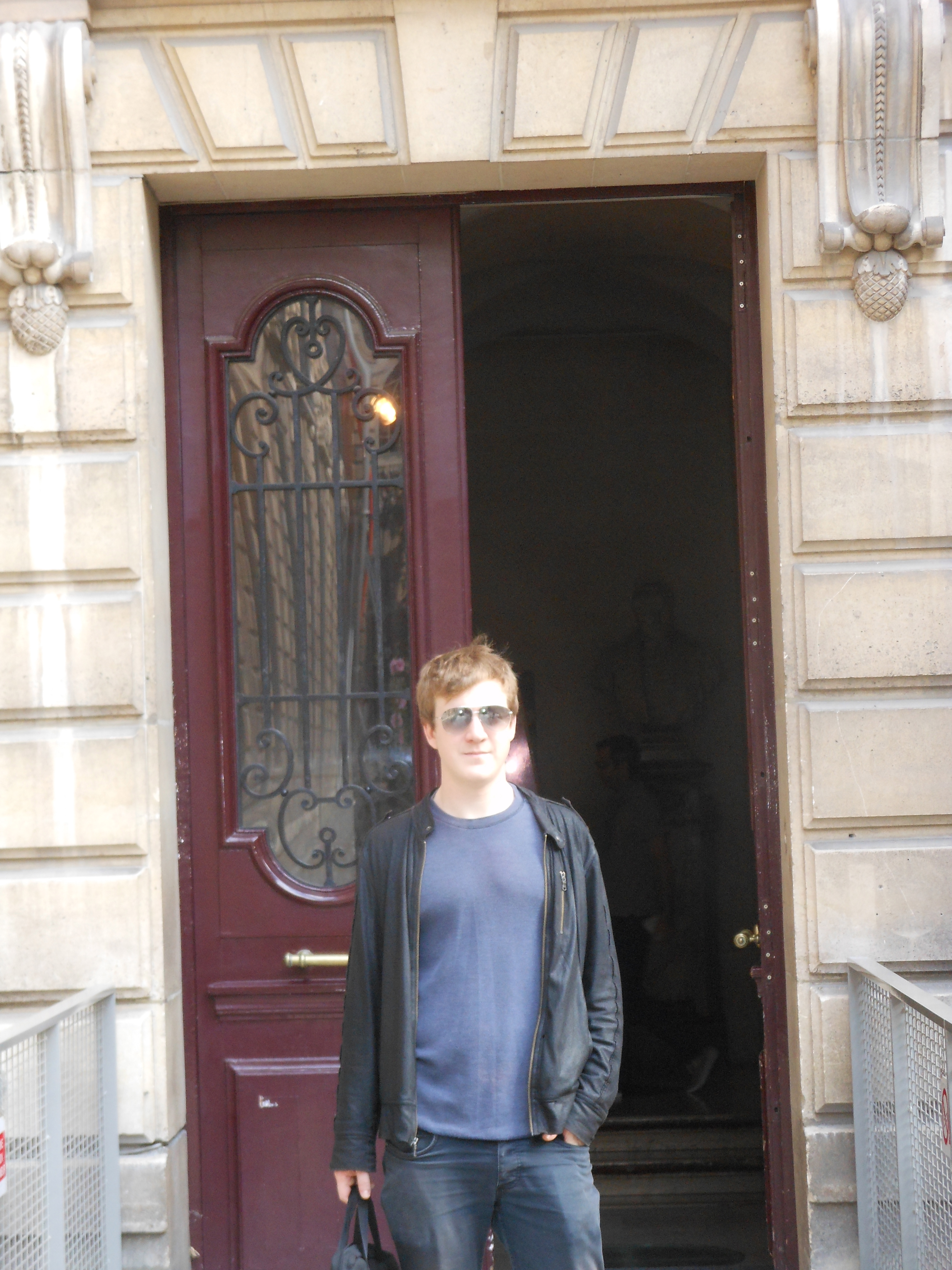
Lukas
As with my first blog post, I will first summarize my research at the national library, then say a few words about my home and social lives in Paris.
My research has progressed well since the last round of blog posts. Readers may recall that my preliminary goal as a President’s Summer Fellow was to identify the geographic origins of the second text in Ms. BNF 375, a medieval French version of the Apocalypse. I spent my first month in Paris doing just that. I first performed a dialectal analysis to determine the provenance of 375’s copy of Explication. In brief, the copyist wrote in picard, a Northern scripta, or written dialect. However, I also noticed that the text opens with a prologue, and that this prologue exhibits a number of linguistic traits inconsistent with Picard writing. Working under the assumption that the language of the prologue is also that of the original text, I was able to link Explication to a prominent 12th-century copyist, Gilbert de la Porrée, bishop of Poitiers from 1142-1154. In the end, then, I can make a pretty tenable connection between 375’s Apocalypse and the city of Poitiers.
Notes from a Paris Biology Lab, Presidents Summer Fellowship, Ch 2
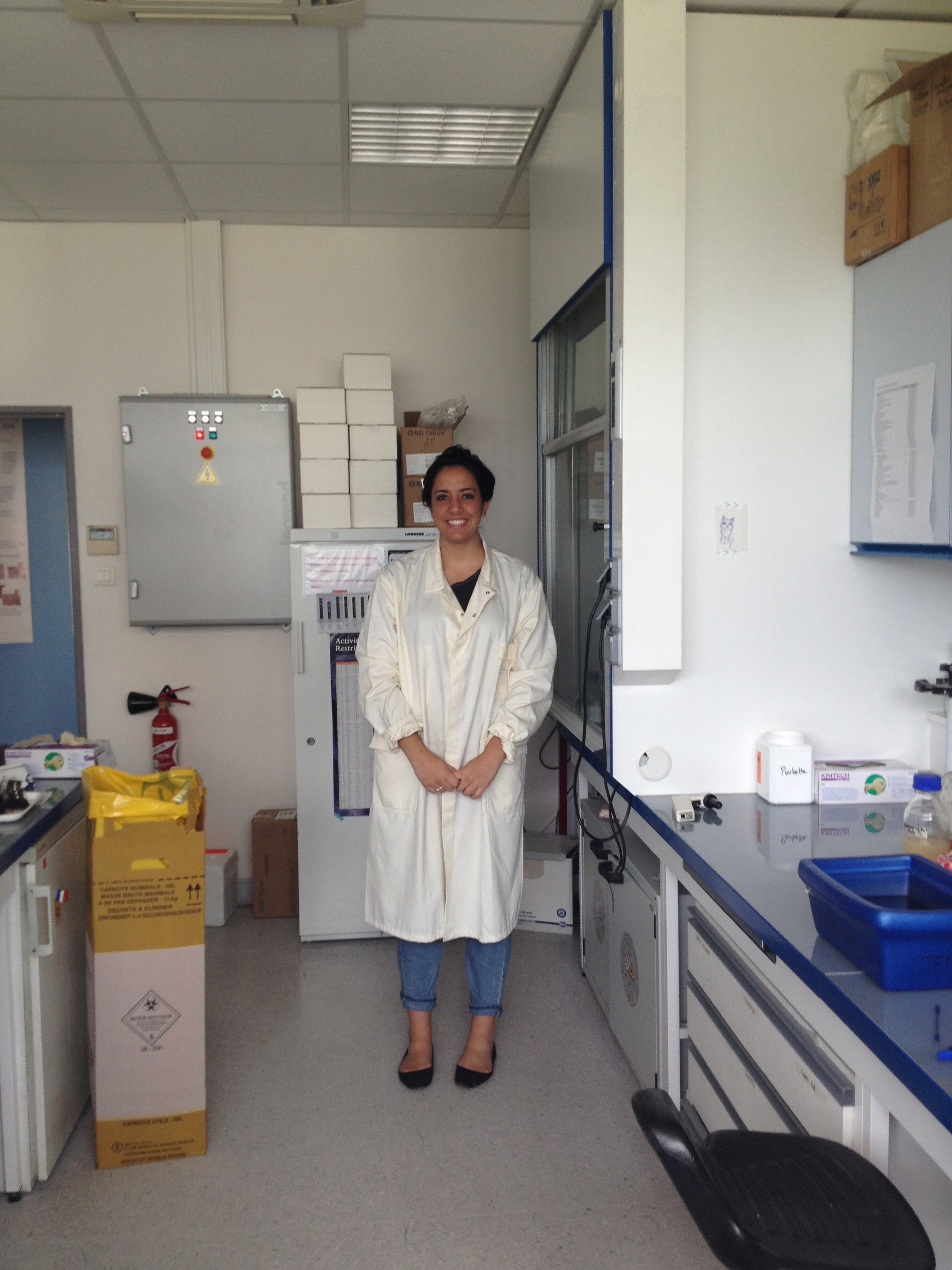
Lab notes
Hello! I am starting the beginning of my fourth week of my internship here in Paris! Wow, time goes by very quickly.
Today I read a great article called Disciplinarity: An Introduction by David R. Shumway and Ellen Messer-Davidow. It had a sweeping overview of the history of disciplinary education, and cited many of the current scholars of the transdisciplinary revolution that is catching on in academia. It was fascinating, and I hope to re-read it later tonight. I also did some research on William Whewell, a 19th c. polymath. He wrote on so many subjects that it is hard to get an idea of his character, but it is clear that he was an influential thinker in Britain. He is most well-known for his philosophy of science, history of science and moral philosophy (SEP). Some neat facts about him are that he coined the term "scientist," and that before him scientists were "called natural philosophers." Ha! The irony! I wonder how many scientists are aware of the philosophic implications behind their title…. Whewell was also very close to the influential scientists of his time. Darwin, Faraday and others would come to him to invent terms such as “anode,” “cathode,” and “ion” (those were invented for Faraday). Anyways, Whewell is someone who I hope to do more reading on. He seems like a great mind and his work is very pertinent to my studies.
Continue reading Notes from a Paris Biology Lab, Presidents Summer Fellowship, Ch 2
